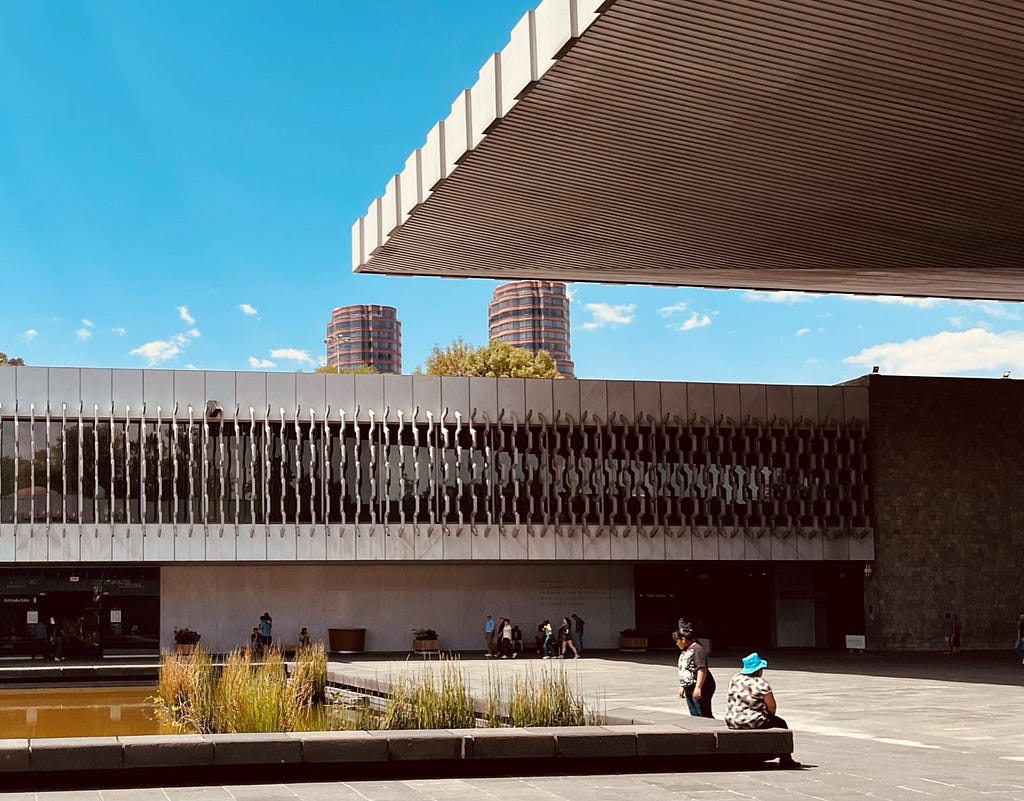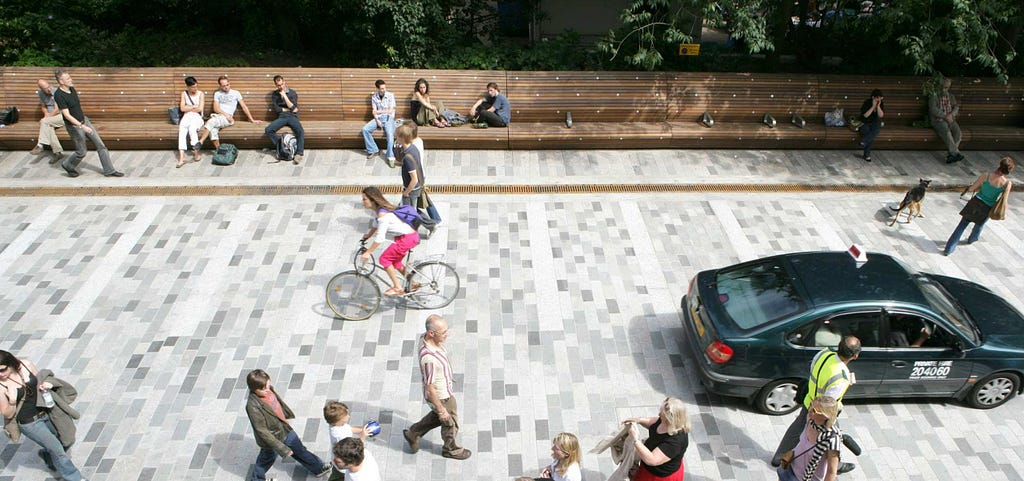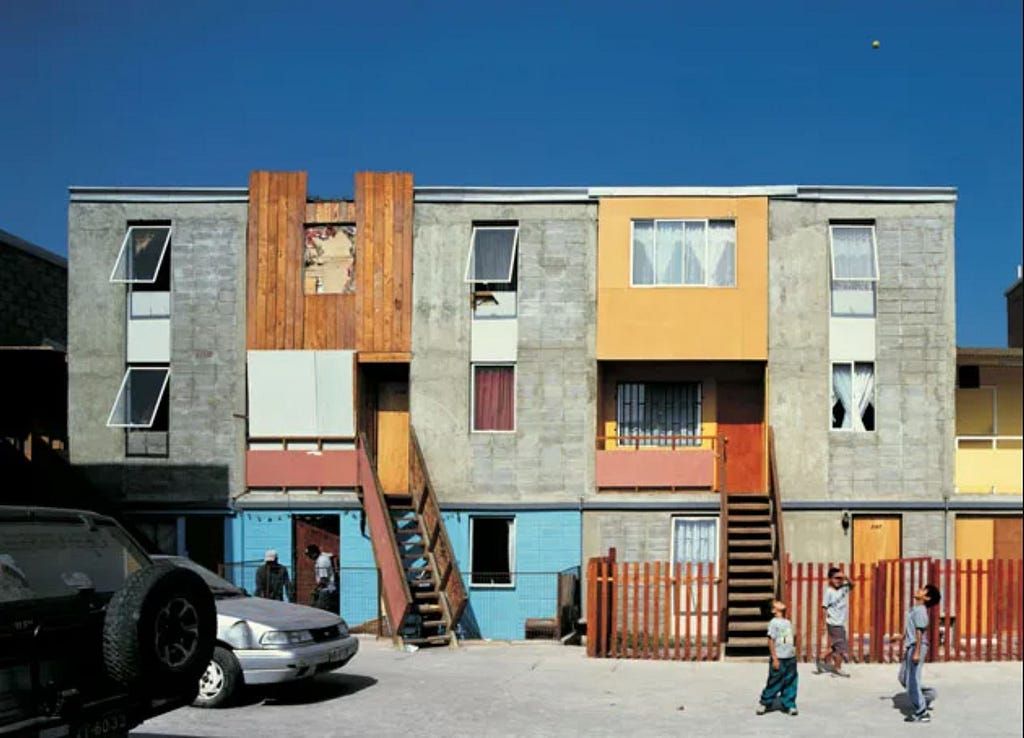Oppressive architecture often cloaks itself in an aesthetic of deliberate indifference rather than parading in grand columns and stairs.
In times of heightened partisanship and divergent realities, design that is apathetic to social divide echoes the ‘banality of evil’ in its passive complicity [1, 2].
Given architecture’s historical engagement with social and political contexts, one cannot help but wonder: How can contemporary architecture create community? Revisiting this question could reveal answers previously bypassed or deemed obsolete, yet newly relevant.
What follows is a concise exploration of two main paradigms and their subsequent views framing architecture’s potential role in community-building.
Paradigm One: Architecture Creates Community Through Its Built Form
In this paradigm, building community is approached by two rather distinct schools of thought — the disciplinary and the interdisciplinary.
1. 1. The Disciplinary View
The discipline of architecture primarily regards the built form as a cultural and political enterprise. In terms of this, architecture builds community because it’s an idea about, or attitude towards, a people’s identity— a critical reflection on who they are or who they aspire to become. Internally, it binds them through the thread of a shared sense of meaning, either existing and emergent. Externally, it becomes the story they wish to tell the world. It can be sculpted around a conviction or engineered to afford the community the possibility of appropriation or adaptation.
The Disciplinary view towards creating community is also the dominant and most resonant in both architectural academia and visual media. The outlook has manifested in various forms, from the celebratory association with the Bilbao Effect to the denigrative reference of the Beaubourg Effect [3]. Compared to other perspectives discussed in this essay, this approach has a higher scalar versatility as well — community, context, locale, place, or region, as in Critical Regionalism [4][5], can vary in scale: from a village in Kéré’s Gando School to a country in Doshi’s Institute of Indology. Under this view’s influence, numerous governments emerged as the leading patrons, adopting architecture in nation-building projects and the redefining of national identity, particularly in post-colonial and post-apartheid contexts after WW2 [6].

1. 2. The Interdisciplinary View
This perspective tends to scrutinize the physicality of architecture in relation to the nuances of human experience and behavioral patterns. In this framework, the methodological paraphernalia of behavioral sciences is used as a lens to scan for correlations between specific design decisions and their ensuing human responses [7].
When it comes to creating community, this approach suggests pairing symbolically significant features, or those that evoke a sense of attachment and memory, with physical and spatial properties that promote gathering or facilitate social interactions — intentional or serendipitous. Although the interdisciplinary view has gained momentum through advancements in environmental psychology and neuroscience research, methods of collecting behavioral and experiential data, and computational modeling of human spatial behavior [8], it has often been designated as ‘environmental design’ and operated, by design and definition, at the periphery of the discipline of architecture — perhaps in a deliberate effort to maintain the ‘autonomy of the discipline [9]’. Environmental Design Research Association has been an ardent proponent of the interdisciplinary view for the past five decades.

Paradigm Two: Architecture Creates Community Through Its Process
By extending social relevance beyond the built form to include the act of creating it, the second paradigm regards participation in the design, or the process of co-creation, as a community-building practice.
Notions that ground social relevance in the process have also been marginalized by the mainstream narrative of the discipline, receiving scant attention in both academic curricula and professional practice. This is often attributed to an argument suggesting that the “common folk” lack the sophistication to create good design — would a doctor consult their patient about the medication they prefer? Three distinct intellectual and practical currents contest the underlying premise of this question, criticizing it as reductively dismissive.
2.1. The Vernacular and/or Traditionalist View
This approach cites the recurrence of elegant design solutions in vernacular buildings— or patterns — as evidence of non-architects’ ability to shape design. Essentially, non-designers can create clever and beautiful solutions, or ‘patterns,’ so long as they adhere to an established design ‘language’ [10].
The ‘language’ is a byproduct of the community’s broader value system or tradition. It serves as a unifying force among individuals, enabling them to create solutions, and in this case objects, that are inherently interconnected because they all originate from the same foundational principles. This approach to community-building anchors individual expressions in a pre-existing yet evolving language, thereby, it produces a sense of continuity, familiarity, and stability. Alexander, Fathy, and Kéré could be cited as members of this circle.

2.2. The Participatory Design View
Unlike the previous, the Participatory Design perspective is driven by a socio-political agenda. While the Disciplinary group often discount this view for failing to produce visually critical architecture, advocates of Participatory Design counter by asserting that the former has lost touch with a fundamental truth: architects’ accountability isn’t towards a conceptual, esoteric discipline, rather, it is to be citizens who recognize the real, complex, and often unfair social and power dynamics in which they and their users are situated. In a liberal democracy, there exists a moral imperative to leverage one’s privilege to amplify the agency of those with less power. In this context, design is a privilege, and its goal, to exercise representation.
Community is a natural byproduct of this approach towards design that is akin to participatory democracy, grounding decision-making in dialogue, solidarity, and common good. Henry Sanoff serves as a seminal voice of this group [11, 12].

2.3. The Design Thinking View
Emerging from the realm of Design Studies, this perspective is less concerned with upholding traditional continuity or addressing power dynamics. In fact, it consciously distances itself from conventional solutions and remains neutral toward liberal democratic ideals.
Instead, this viewpoint nurtures a community fueled by the shared thrill for creating novel ideas. While there may be some overlap with Participatory Design — particularly in the emphasis on envisioning better futures — this approach gives primacy to imagination and creative solution of social problems. Here, user co-creation, even with marginalized communities, is primarily a means to unearth exotic insights from the seemingly mundane aspects of daily life. This sense of collective exhilaration not only builds community among experts who “’Yes, and’ each others’ ideas”, but also instills a sense of ownership in end-users, as they begin to recognize clever solutions crafted around their daily challenges [13]. Outside of architecture, Apple and IDEO have been trailblazing organizations championing this perspective. Within the architectural domain, the works of Alejandro Aravena, Herman Hertzberger, and Shigeru Ban align closely with this outlook, although not explicitly articulated as such.

Reflection
Rorty writes “solidarity has to be constructed out of little pieces, rather than found already waiting, in the form of an ur-language which all of us recognize when we hear it. [14]”
When it comes to social relevance, architecture, as a profession and as a discipline, has historically favored ‘Paradigm One’ over ‘Paradigm Two’ — an object-centric lens, or ur-language, over co-creative processes. Yet, moments where a foundational system of thought can instantly unify people are truly rare; community is a product of dialogue, collaboration, and shared experiences. The built form might not be the designer’s only, or most, effective resource for generating social capital.
This essay concedes the challenge of maintaining disciplinary rigor while empowering users to partake in co-creation, but remains hopeful that the tension between the two is a creative one.
References
[1] Dimock, Michael, and Richard Wike. “America Is Exceptional in the Nature of Its Political Divide.” Pew Research Center, 13 Nov. 2020.
[2] Arendt, Hannah. “Eichmann in Jerusalem: A Report on the Banality of Evil.” Viking Press, 1963.
[3] Baudrillard, Jean. “The Beaubourg-Effect: Implosion and Deterrence.” Spring, 1983.
[4] Frampton, Kenneth. “Towards a Critical Regionalism: Six Points for an Architecture of Resistance.” In “The Anti-Aesthetic: Essays on Postmodern Culture,” edited by Hal Foster, 16–30. Bay Press, 1983.
[5] “Rem Koolhaas + Kenneth Frampton: The Berlage Archive.” ArchDaily, 1998, https://www.youtube.com/watch?v=7UcKeyxD6T4
[6] Vale, Lawrence J. “Architecture, Power and National Identity.” Yale University Press, 1992.
[7] Lang, Jon. “Creating Architectural Theory: The Role of the Behavioral Sciences in Environmental Design.” Van Nostrand Reinhold Company, 1987.
[8] Heppenstall, Alison J., et al. “Agent-Based Models of Geographical Systems.” Springer, 2012.
[9] Whiting, Sarah. “In Defense of Autonomy: A Critique of Critical Architecture.” Autonomy and Ideology: Positioning an Avant-Garde in America, edited by Robert Somol, Monacelli Press, 1997.
[10] Alexander, Christopher, et al. “A Pattern Language: Towns, Buildings, Construction.” Oxford University Press, 1977.
[11] Calvo, M., et al. “Strategies and Tactics of Participatory Architecture.” DRS2022: Bilbao, 2022.
[12] Sanoff, Henry. “Community Participation Methods in Design and Planning.” Wiley, 2000.
[13] Brown, Tim. “Change by Design: How Design Thinking Transforms Organizations and Inspires Innovation.” HarperBusiness, 2009.
[14] Rorty, Richard. Contingency, Irony, and Solidarity. Cambridge University Press, 1989.
Architecture and Community in Times of Social Divide was originally published in UX Planet on Medium, where people are continuing the conversation by highlighting and responding to this story.